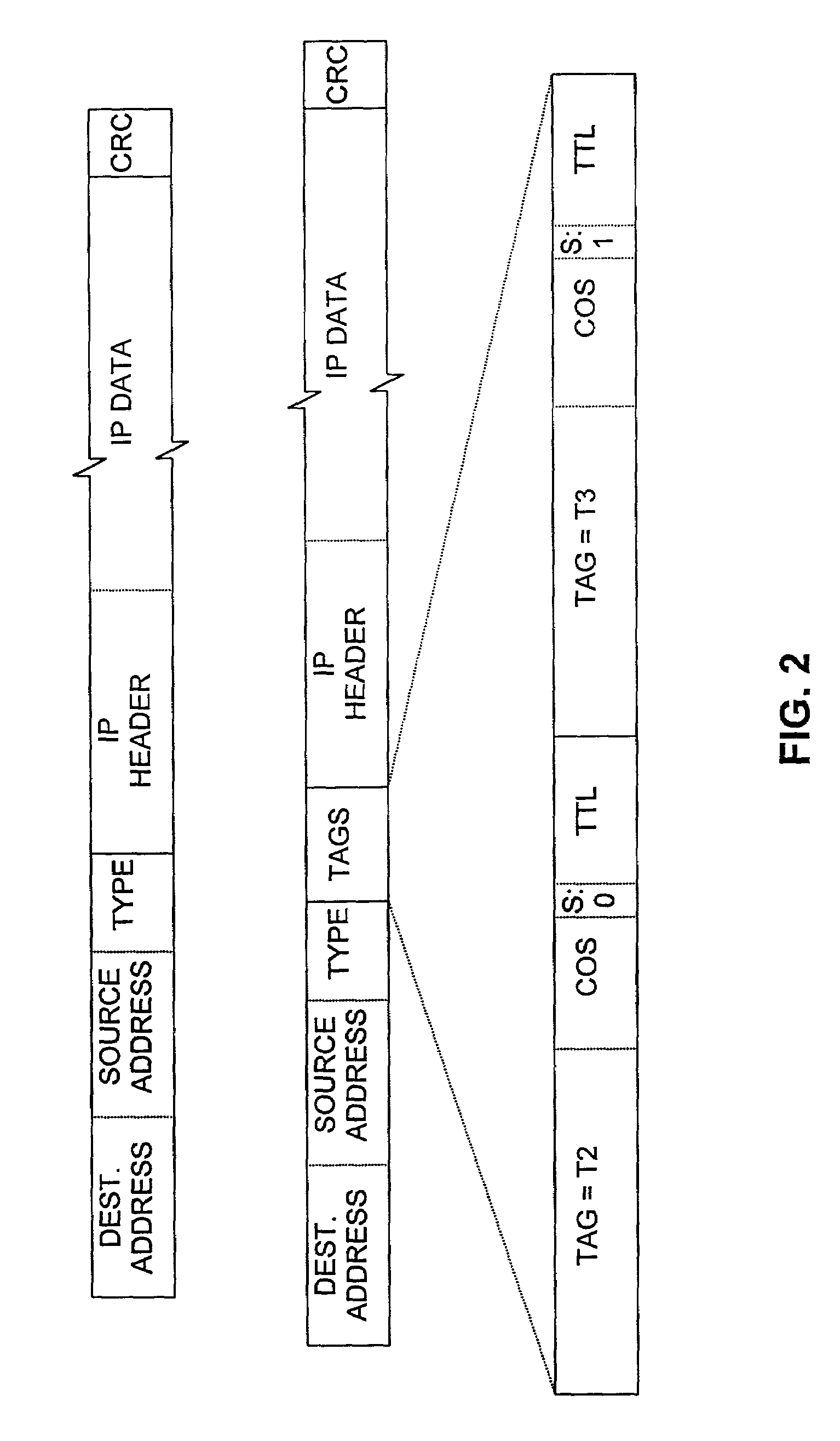Peer-model support for virtual private networks having potentially overlapping addresses
a virtual private network and peer-model technology, applied in the field of communication networking, can solve the problems of increasing the amount of resources (memory, processing, bandwidth) needed to maintain the routing information, exacerbate the existing information-maintenance problem, and the problem is even wors
- Summary
- Abstract
- Description
- Claims
- Application Information
AI Technical Summary
Benefits of technology
Problems solved by technology
Method used
Image
Examples
Embodiment Construction
Overview
[0068]Before we describe an embodiment of the invention in detail, we will employ FIG. 1 to present a brief overview of its operation.
[0069]FIG. 1 depicts a very simplified topology for illustrating an SP's connections between two parts of a customer enterprise C's VPN. Two of the enterprise's edge routers CE1 and CE2 are located remotely from each other, and the customer enterprise has contracted with the SP to provide connections between the customer's routers such as CE1 and CE2 to form a VPN V. Among the SP's resources are edge routers PE1 and PE2 and further, transit routers P1 and P2 that together form a path between CE1 and CE2.
[0070]Consider a packet that a router CE2 receives from a location (not shown) in VPN V, and suppose that the contents D1 of the packet's destination-address field is the address of a system in VPN V at CE1's location. We assume that CE2 has interfaces over which it could potentially have forwarded the packet to routers, not shown in the drawin...
PUM
 Login to View More
Login to View More Abstract
Description
Claims
Application Information
 Login to View More
Login to View More - R&D
- Intellectual Property
- Life Sciences
- Materials
- Tech Scout
- Unparalleled Data Quality
- Higher Quality Content
- 60% Fewer Hallucinations
Browse by: Latest US Patents, China's latest patents, Technical Efficacy Thesaurus, Application Domain, Technology Topic, Popular Technical Reports.
© 2025 PatSnap. All rights reserved.Legal|Privacy policy|Modern Slavery Act Transparency Statement|Sitemap|About US| Contact US: help@patsnap.com



